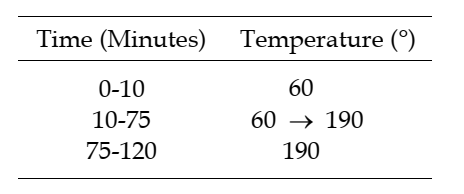ตำรายาของประเทศไทย
Thai Pharmacopoeia
สำนักยาและวัตถุเสพติด กรมวิทยาศาสตร์การแพทย์ กระทรวงสาธารณสุข
Bureau of Drug and Narcotic, Department of Medical Sciences, Ministry of Public HealthThai name น้ำมันลูกผักชี (NAM MAN LUK PHAK CHI)
Category Carminative; pharmaceutic aid.
Coriander Oil is the volatile oil distilled with steam from the dried ripe fruit of Coriandrum sativum L. (Family Umbelliferae).
Constituents Coriander Oil contains predominantly monoterpene alcohols as linalool. It also contains terpenes (e.g., -pinene, limonene, γ-terpinene), and camphor.
Description Clear colourless or pale yellow liquid; odourless.
Solubility test Soluble, at 20°, in 3 volumes of ethanol (70 per cent).
Packaging and storage Coriander Oil shall be kept in well-filled, tightly closed containers, protected from light, and stored at a temperature not exceeding 25°.
Identification
Carry out the test as described in the “Thin-Layer Chromatography” (Appendix 3.1).
Standard solution Dissolve 10 µL of linalool, and 2 µL of geranyl acetate in 1.0 mL of toluene.
Test solution Dissolve 10 µL in toluene and dilute to 1.0 mL with the same solvent.
Adsorbent Silica gel F254 (TLC or HPLC plate).
Mobile phase Ethyl acetate and toluene (5:95).
Application Apply 10 µL (or 2 µL) each of Standard solution and Test solution as 15-mm (or 8-mm) bands.
Development and drying Allow the solvent front to ascend 10 cm (or 6 cm) above the line of application. Dry the developed plate in air for 5 minutes.
Detection Spray the plate with anisaldehyde TS, heat at 105° for 5 minutes and examine under visible light. Observe the result.
Results When examined under visible light, the test solution shows a violet band due to linalool in the lower third, corresponding in colour and Rf to the band shown by the standard solution. A violet-blue band near the starting line and a bluish violet band in the upper third of the chromatogram is present. The retention time of the major peaks in the chromatogram of the Coriander Oil correspond to those in the chromatogram of the Standard solution (a), as obtained in the Chromatographic profile.
Specific gravity 0.860 to 0.880 (Appendix 4.9).
Optical rotation + 7° to + 13° (Appendix 4.8).
Refractive index 1.462 to 1.470, at 20° (Appendix 4.7).
Acid value Not more than 3.0; use 5 g (Appendix 5.4)
Chromatographic profile Carry out the test as described in the “Gas Chromatography” (Appendix 3.4).
Standard solution (a) Dissolve 10 µL of a-pinene, 10 µL of limonene, 10 µL of γ-terpinene, 10 µL of p-cymene, 10 mg of camphor, 20 µL of linalool, 10 µL of a-terpineol, 10 µL of geranyl acetate and 10 µL of geraniol in 1 mL of heptane.
Standard solution (b) Dissolve 5 µL of geraniol in heptane and dilute to 10.0 mL with the same solvent.
Test solution Use Coriander oil.
Chromatographic system
DETECTOR Flame ionization
COLUMN A fused-silica capillary column (60 m × 0.25 mm) packed with macrogol 20000 (0.25 µm).
TEMPERATURE
Column The temperature programme is as follows:

Injection port 220°
Detector 240°
Carrier gas Helium
Split ratio 1:65
Flow rate 1 mL per minute
System suitability
Sample Standard solution (a)
Suitability requirements
Resolution Not less than 1.5 between linalool and camphor peaks.
Procedure Inject a portion (about 0.2 mL) of Standard solution (a), Standard solution (b) and Test solution into the chromatograph. Identify the peaks due to the components in Coriander Oil, using the retention times determined from the chromatogram obtained from the standard solution (a). Measure the areas of the principal peaks in the chromatogram obtained from the Coriander Oil.
Calculation Calculate the percentage content of the components of Coriander Oil taken by normalization procedure.
Limits
— a-pinene: 3.0 per cent to 7.0 per cent.
— limonene: 1.5 per cent to 5.0 per cent.
— γ-terpinene: 1.5 per cent to 8.0 per cent.
— p-cymene: 0.5 per cent to 4.0 per cent.
— camphor: 3.0 per cent to 6.0 per cent.
— linalool: 65.0 per cent to 78.0 per cent.
— a-terpineol: 0.1 per cent to 1.5 per cent.
— geranyl acetate: 0.5 per cent to 4.0 per cent.
— geraniol: 0.5 per cent to 3.0 per cent.
— disregard limit: area of the peak in the chromatogram obtained from the standard solution (b) (0.05 per cent).
Chiral purity Not more than 14 per cent of (R)-linalool. Carry out the test as described in the “Gas Chromatography” (Appendix 3.4).
Standard solution Dissolve 10 µL of linalool and
5 mg of borneol in pentane and dilute to 10.0 mL with the same solvent.
Test solution Dissolve 20 mg of Coriander Oil in pentane and dilute to 10.0 mL with the same solvent.
Chromatographic system
Detector Flame ionization
Column A fused-silica capillary column (25 m × 0.25 mm) packed with modified b-cyclodextrin for chiral chromatography (0.25 µm).
Temperature
Column The temperature programme is as follows:

Injection port 230°
Detector 230°
Carrier gas Helium
Split ratio 1:30
Flow rate 1.3 mL per minute
System suitability
Sample Standard solution
Suitability requirements
Resolution Not less than 5.5 between(R)-linalool (first peak) and (S)-linalool (second peak) and not less than 2.9 between the peaks due to (S)-linalool and borneol (third peak).
Procedure Separately inject equal volumes (about
1 µL) of Standard solution and Test solution into the chromatograph. Measure the responses for the major peaks.
Calculation Calculate the percentage content of (R)-linalool using the expression:

where AS = area of the peak due to (S)-linalool;
AR = area of the peak due to (R)-linalool.